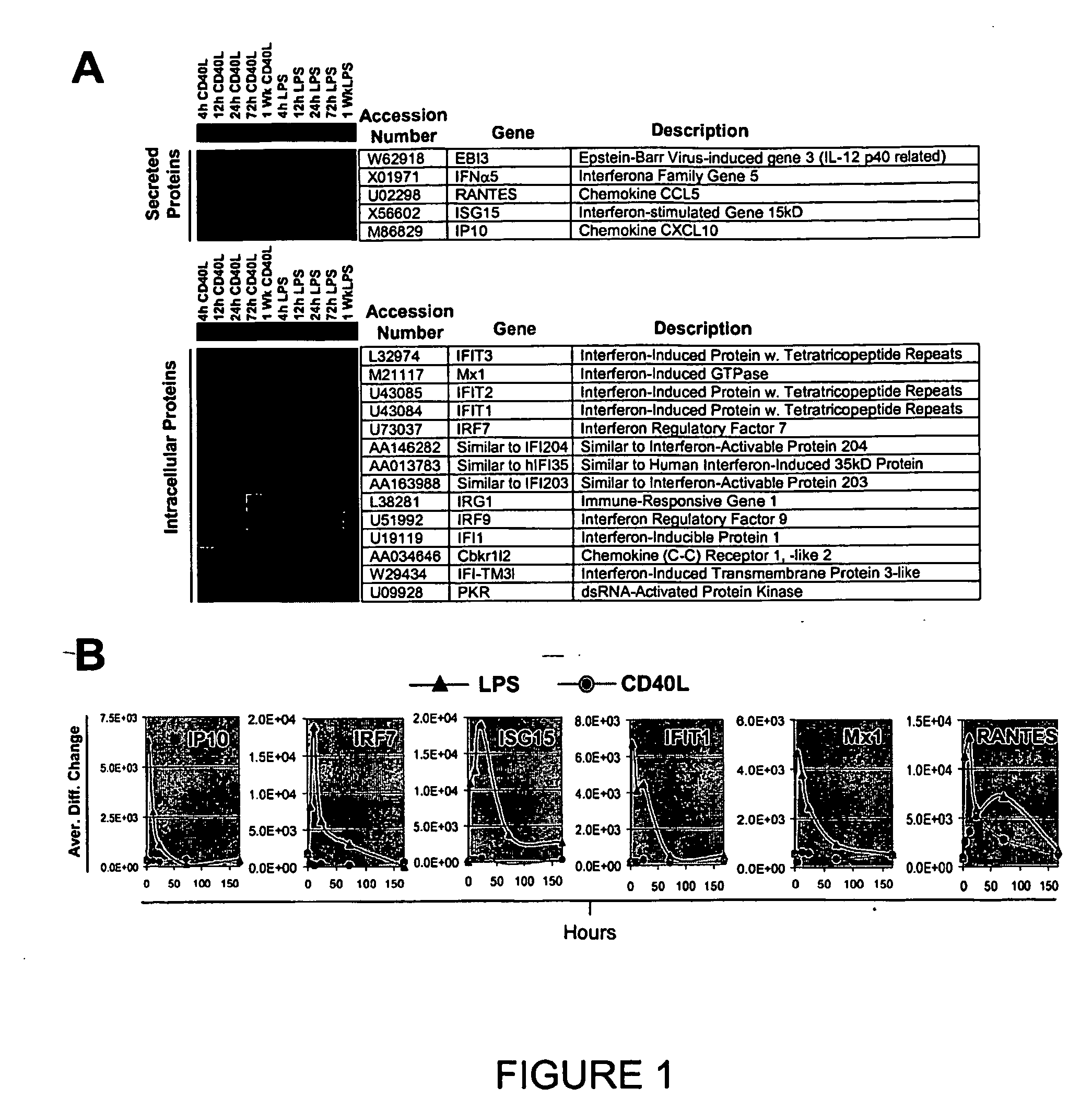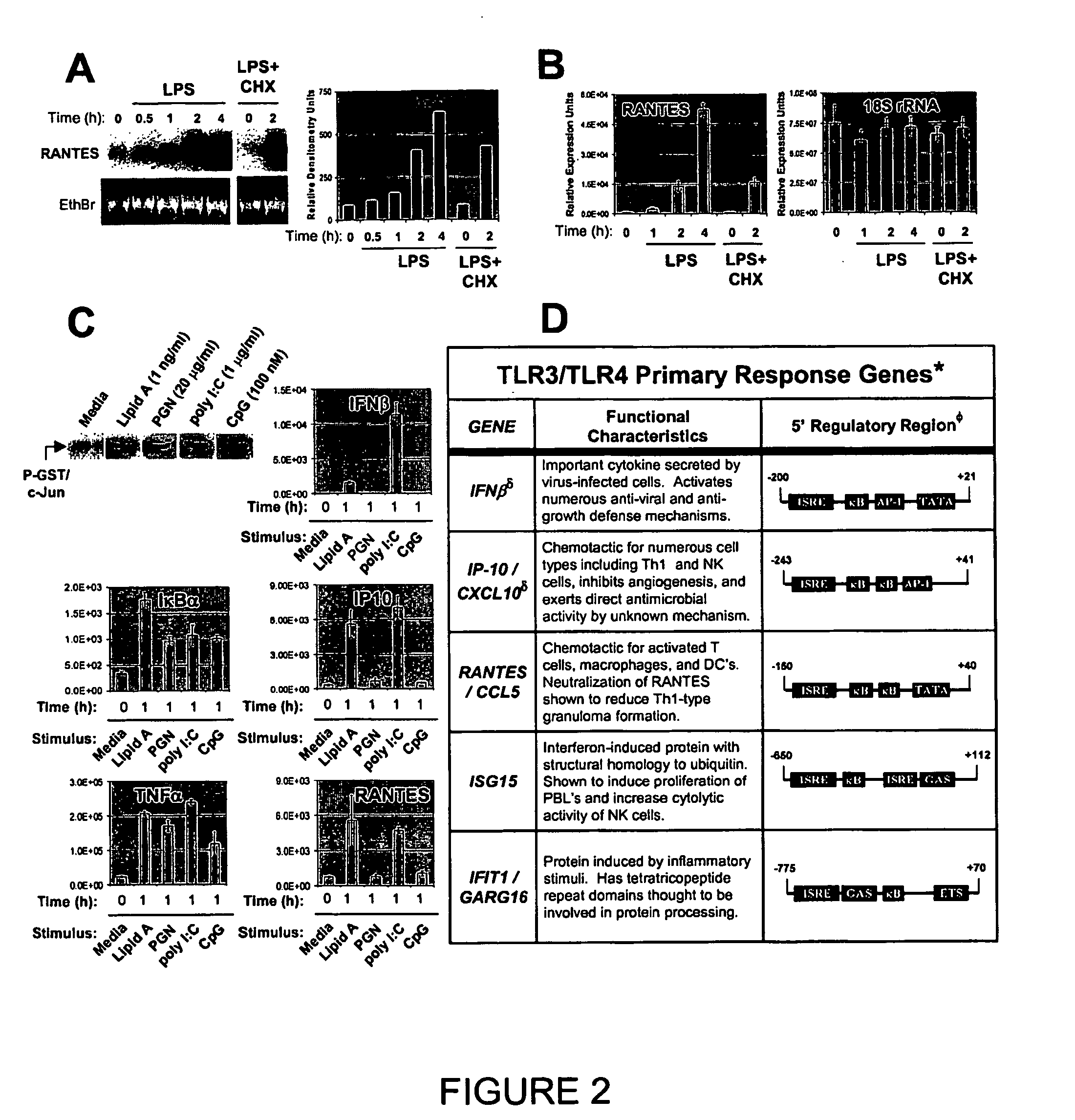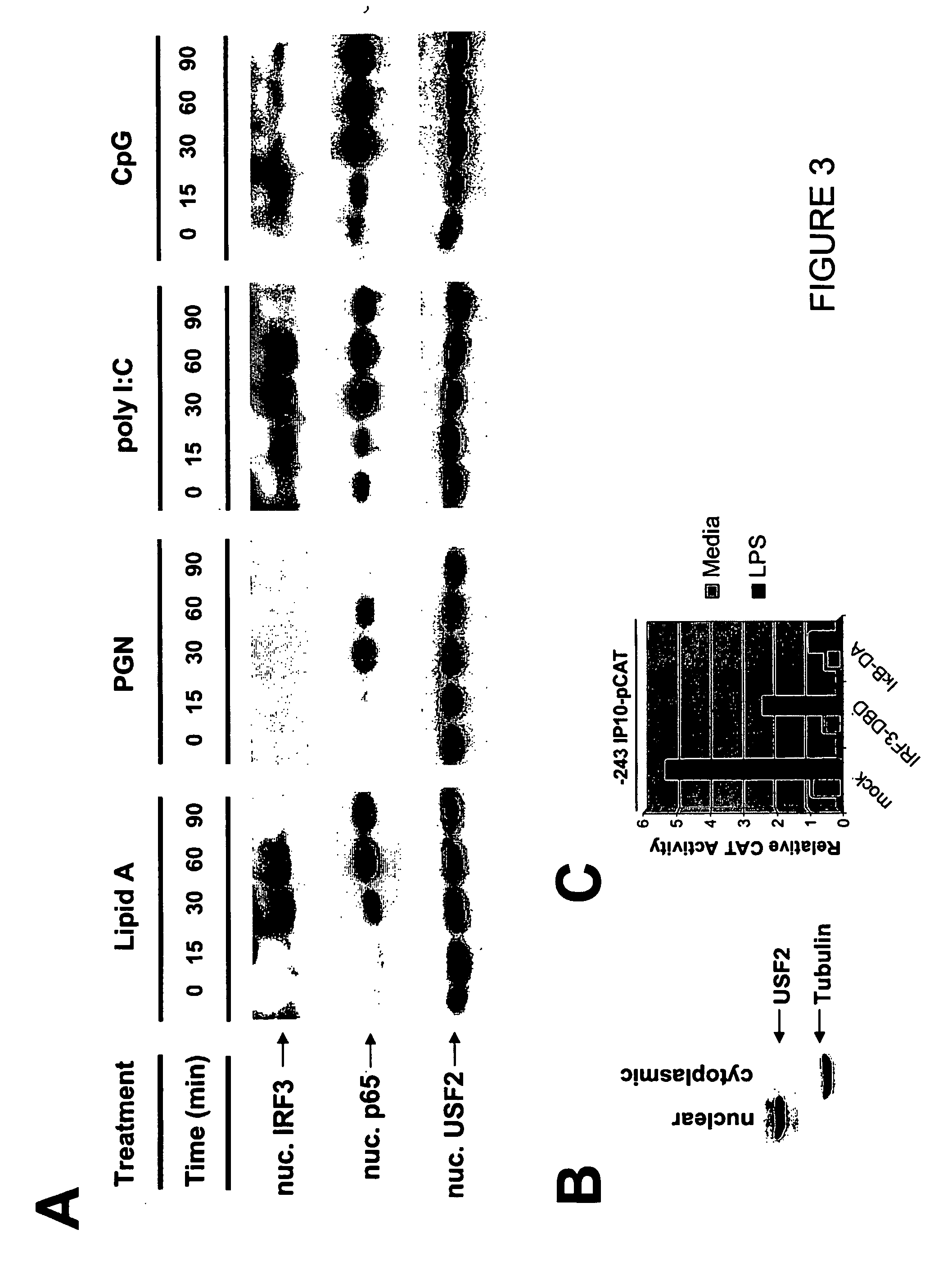Methods for stimulating tlr irf3 pathways for inducing anti-microbial, anti-inflammatory and anticancer responses
a technology of tlr irf3 and irf3, which is applied in the direction of dna/rna fragmentation, biological material analysis, medical preparations, etc., can solve the problems of largely undetermined functional role of irf3 in tlr3- or tlr4-induced gene expression, and complex functional roles of tlr3 and tlr4
- Summary
- Abstract
- Description
- Claims
- Application Information
AI Technical Summary
Problems solved by technology
Method used
Image
Examples
example 1
[0141] The following Example provides a description of TLR3 / TLR4-specific IRF3 mediated pathway that leads to an antiviral response.
Materials and Methods
Microarray and Clustering Analysis
[0142] B cell isolation, target preparation, and hybridization using Affymetrix Mu6500 microarrays were performed as described previously (Dadgostar, H., Zarnegar, B., Hoffman, A., Qin, X.-F., Truong, U., Rao, G., Baltimore, D., and Cheng, G. (2002), Proc. Natl. Acad. Sci. USA 99, 1497-1502). Differential expression data was analyzed by Affymetrix Microarray Suite 4.0 software. Average difference change values were then normalized and the genes were clustered by the uncentered correlation average linkage hierarchical clustering algorithm using Cluster. Data was then visualized as a dendogram using Treeview software (www.rana.Ibl.gov / EisenSoftware.htm).
Cell Culture and Reagents
[0143] Murine bone marrow-derived macrophages (BMMs) were differentiated from marrow from 6-10 week old C57B / 6 mice a...
example 2
[0168] The following Example describes that TLR3 mediates a more potent antiviral response than TLR4.
Materials and Methods
Cell Culture and Reagents
[0169] Murine bone marrow-derived macrophages (BMMs) were differentiated from marrow as previously described (Doyle, S. E., S. A. Vaidya, R. O'Connell, H. Dadgostar, P. W. Dempsey, T.-T. Wu, G. Rao, R. Sun, M. E. Haberland, R. L. Modlin, and G. Cheng. 2002. IRF3 mediates a TLR3 / TLR4-specific antiviral gene program. Immunity 17:251). A129 (IFNAR-1− / −) (Muller, U., U. Steinhoff, L. F. L. Reis, S. Hemmi, J. Pavlovic, R. M. Zinkernagel, and M. Aguet. 1994. Functional role of type I and type II interferons in antiviral defense. Science 264:1918) and B6129SF2 / J wild type control mice were obtained from B&K Universal Ltd. and Jackson Laboratories, respectively. C57 / B6 mice were used for all experiments not involving the A129 mice (Jackson Laboratories). Specific TLR activation was achieved using F-583 (Rd mutant) E. coli lipid A for TLR4 (S...
example 3
[0188] The following Example describes that TLR3 / 4 activation leads to an IFN-dependent G1 / S block in murine macrophage cells.
[0189] The RAW 264.7 murine macrophage cell line was treated for two 24 h intervals with media alone (control), 10 ng / ml Lipid A (Lipid A) or 10 mg / ml poly I:C. Cells were then fixed and permeablized and treated with the DNA-intercalating dye, DAPI (pharmingen). DNA content was then measured by laser scanner cytometry (LSC). The cell cycle is divided into G1 (red), S-phase (yellow) and G2 / M (blue) as shown in FIG. 14A.
[0190] Primary bone marrow-derived macrophages from wild-type (IFNAR+ / +) and IFNα / β receptor knockout (IFNAR− / −) mice were treated as indicated in (FIG. 14A). The cells were then pulsed with BrdU for two hours to label S-phase cells. The cells were fixed and permeablized and stained with a long red-labeled anti-BrdU antibody. S-phase cells were then quantitated by LSC. Fold increase in the percentage of cells in S-phase is graphed as shown in ...
PUM
| Property | Measurement | Unit |
|---|---|---|
| time | aaaaa | aaaaa |
| volume | aaaaa | aaaaa |
| concentrations | aaaaa | aaaaa |
Abstract
Description
Claims
Application Information
 Login to View More
Login to View More - R&D
- Intellectual Property
- Life Sciences
- Materials
- Tech Scout
- Unparalleled Data Quality
- Higher Quality Content
- 60% Fewer Hallucinations
Browse by: Latest US Patents, China's latest patents, Technical Efficacy Thesaurus, Application Domain, Technology Topic, Popular Technical Reports.
© 2025 PatSnap. All rights reserved.Legal|Privacy policy|Modern Slavery Act Transparency Statement|Sitemap|About US| Contact US: help@patsnap.com



